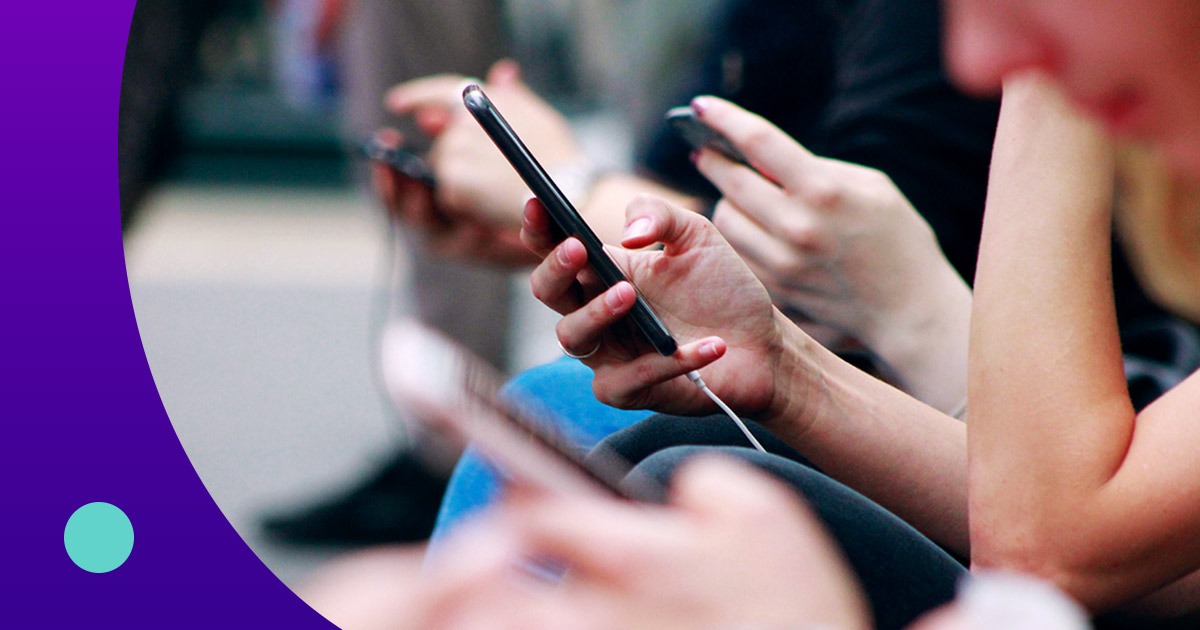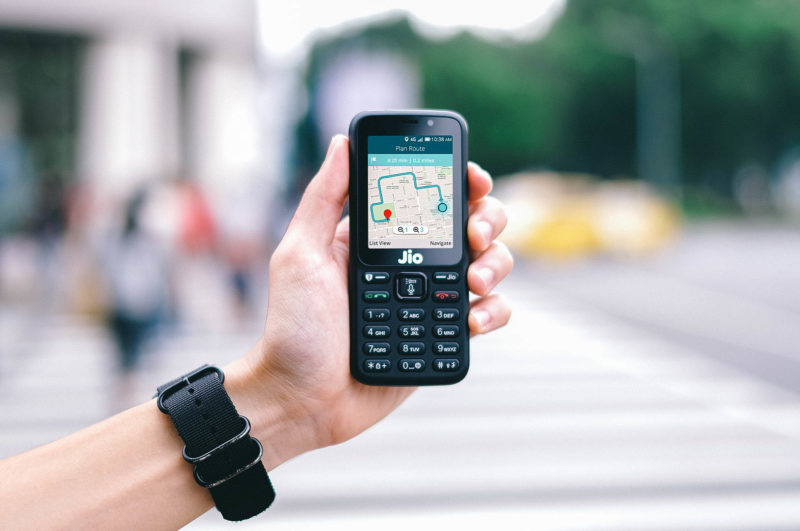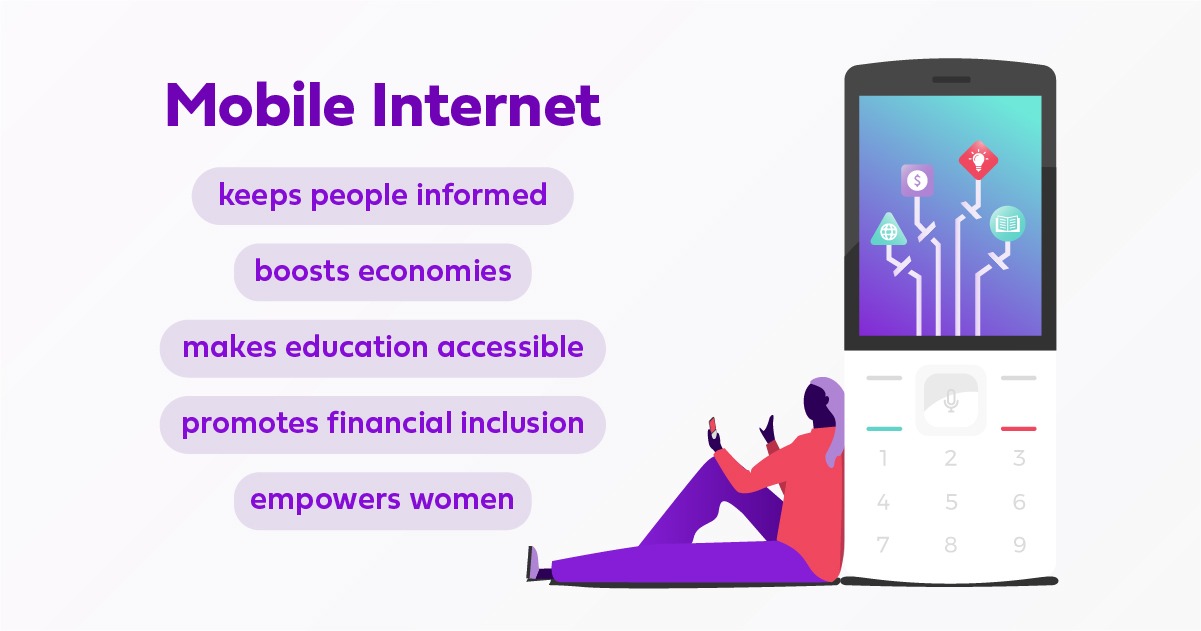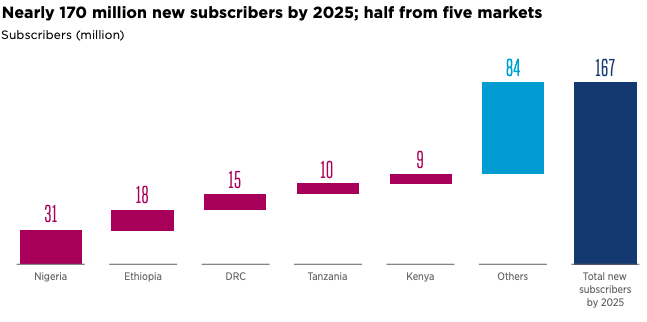
With millions of mobile phone users around the world willing to pay for data packages, why would you give away data for free? Because if your customers don’t understand the benefits of data — if your customers are new to the internet — they won’t know they need it.
In developing countries, many people have had little to no exposure to websites, apps, or even text messages. They may never have typed a query into Google, made a video call to see the face of a faraway relative, or searched for a job online. If they don’t know what they are missing, you can’t ask them to pay to find out.
Giving new mobile phone users free data is an investment in future customers.
Free mobile data marketing campaigns attract new customers
Whether you are attracting first-time users or winning over your competitors’ customers, offering free data is a great way to garner attention. While it’s difficult to get someone to buy something they do not understand, “try before you buy” campaigns can win over even the most skeptical consumers.
This marketing tactic is also a great way to encourage existing mobile phone users to switch to your service. They may come for the free data, but they will stay once you prove your worth, even if it means they upgrade to a paid service.
U.S. mobile network operator (MNO) Sprint had great success with this strategy. They offered unlimited data for a year for new customers switching from other plans. One of the YouTube videos promoting the deal reached 539,000 views on the first day.
Other “freemium” services, such as Slack and Spotify, have proved this approach successful as well. Both companies provide complimentary access to some of their features and allow users to test the premium options for free for a limited time (hence the term “freemium). Once tested, the premium features are tough to give up, so it’s easier to convince users to keep them by upgrading. In fact, Slack converts 30% of their free users to paying customers. In the third quarter of 2019, Spotify also increased their premium users by 31%.
Data offers that build internet usage habits
The key to an ever-growing customer base is keeping users interested. Give people a sample of mobile internet and they’ll be hungry for more.
Free data for new users
In late 2017, the Indian telecommunications company Reliance Jio launched a smart feature phone running KaiOS called the JioPhone. To generate excitement and convince locals to give the new device a try, the company offered generous free data packages. By the end of March 2018, they had signed up 100 million new subscribers, 72 million of which became paid users.

Reliance Jio has continued to offer free data through promotions, including up to 2GB per day during festival season, and up to 16GB free on the JioPhone’s second anniversary. Each additional promo leads to a surge of new users, most of which turn into paying customers.
Since Jio’s launch, India’s data usage has skyrocketed. India is now among the top 10 countries for mobile data consumption. Previously, India was #155. Clearly, once new users are exposed to the benefits of mobile connectivity, they are willing to pay to maintain their access.
Zero-rated data
Zero-rated services allow users access to specific content or websites (including social media networks) without it counting against data plans.
Providing zero-rated versions of content is a clever way to encourage people to build mobile internet habits. By removing the financial investment barrier, you can draw in new customers with free access to popular apps and services such as Facebook, WhatsApp, and Wikipedia. Once newly connected consumers experience a small section of the internet, they inevitably want more.
To test this theory, an MNO offered users in eight developing countries access to Free Basics by Facebook. As a result, the majority of the users purchased plans to access more websites and watch videos online. A total of 63% ended up paying for data, with 28% switching completely to paid data and 35% using a mix of free and paid services.
Free Basics by Facebook has proved successful in countries all around the world. As Facebook works with MNOs to provide zero-rated versions of informational websites, people in emerging markets discover the advantages of mobile internet and are convinced to pay for broader access. In fact, over 50% of Free Basics users begin paying for data within 30 days.
Sponsored data
MNOs partner with brands and content creators to give users free data packages that can only be used for the sponsored content. These mutually beneficial partnerships allow MNOs to win over customers while sponsors get their content in front of a wider audience.
To entice existing customers to upgrade their plans, South African telecommunications company MTN teamed up with YouTube to provide bonus data specifically for YouTube. The offer includes 20GB of free YouTube data, which could easily translate to up to 20 hours of YouTube video streaming.
U.S. mobile carriers Verizon and AT&T offer ongoing sponsored data programs. Verizon’s program, FreeBee, is a curated collection of content marked with a bee icon to let users know that they will not incur data charges for viewing it. AT&T, on the other hand, relies on the sponsors to notify customers of any sponsored data offers.

Another U.S. mobile carrier, T-Mobile, provides a similar service called “Binge On.” Customers with certain plans receive data-free access to popular music and video streaming sites like Spotify, Netflix, and YouTube. Binge On also includes content in categories such as gaming, news, and sports.
Both limited-time and ongoing sponsored data efforts reel users in with engaging content and keep them hooked on using more mobile data.
Change their lives so you can change their minds
For people who have a limited understanding of the benefits of mobile internet, getting online may seem like an unnecessary expense. But the combination of initially free data packages and complimentary access to a variety of resources can shift their perspective.

Although people may start with social media sites and movies, users will quickly realize there are many life-changing resources at their fingertips as well. When they discover educational resources on zero-rated Wikipedia or through sponsored YouTube data, they’ll be motivated to explore more of what the internet has to offer.
Perhaps they’ll use it to further their education, manage their finances, or improve their health. Regardless, they’re bound to recognize that the mobile internet is a valuable resource worth paying for. With the help of zero-rated informational websites and resources like the KaiOS Life initiative, MNOs can gain loyal paying customers.
Invest in the unconnected and they will invest in you
The GSMA predicts 170 million new mobile subscribers by 2025. With the help of mobile carriers, this number could be even higher in developing countries. It all starts by showing potential customers how they can benefit from mobile internet access.

When newly connected consumers get into the habit of turning to mobile internet for everything from furthering their education to managing their money, they quickly become loyal customers.
It’s time to invest in the next billion. Show them what they’re missing and your services will sell themselves.
To learn more about how you can partner with KaiOS and bring the internet to developing countries, contact us at partnerships@kaiostech.com.
arun